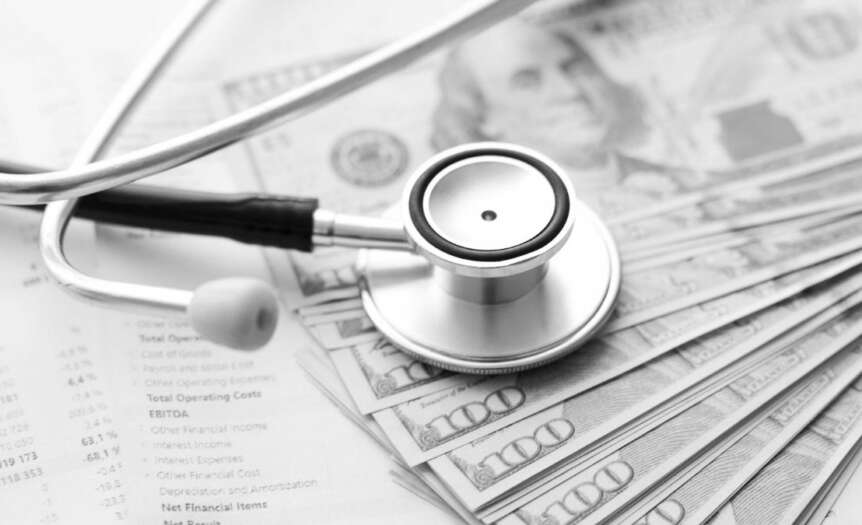In car accident cases and other such emergencies, the victim gets rushed to the emergency room for treatment. In ERs, every patient receives treatment, even if they can’t afford it. However, the medical bills attributed to serious injuries are usually very high. As a result, medical liens are often issued to doctors and medical care providers to ensure they’re paid for their services. To further explain the process, we break down what a medical lien is and how it works.
A Medical IOU
In simple terms, a medical lien is a fancy form of an IOU. In the case of a car accident, a lien is your agreement to pay the doctors for the care they provided. There are different lien funding options for varying circumstances and the individuals involved.
For example, let’s say you get rear-ended and have to go to the hospital to treat a neck injury. Nobody asks you for payment or insurance, and the doctors treat your injuries. From there, the hospital puts a medical lien on your account. The doctors who treated you are the lien holders, and the document guarantees their future payment.
Maybe you work with your lawyer and win a settlement against the person who rear-ended you. You can use the proceeds to pay off the medical lien. That way, the doctors receive the compensation they’re owed for treating your injuries.
Who Receives Liens?
For personal injury claims—mainly car accidents—there are a few types of lien holders. They can include:
- Doctors and hospitals
- Health care providers
- Veterans Affairs
- Workers’ compensation insurers
- Health insurance companies
- Auto insurance companies
In your car accident claim, any one of these people or organizations could be your lien holder. In other words, they’re the people you’ll owe in the future for treating you and providing their services.
Perfecting Your Lien
All right, so once your trial is over and you have your settlement, you need to “perfect” your lien, or fulfill it. Look up your state laws to see how to perfect a lien where you live. In a nutshell, you pay off the debt and send a written notice. This written notice must include the following information:
- Acknowledgment of the debt and your responsibility to pay
- Agreement for the attorney of the injured party to pay the lien holder from the proceeds of the settlement
- Agreement from you that your proceeds will go toward the lien
- The amount of debt and a description of the care or services you received
If you include all this information in your notice along with your payment, the lien will become perfected.
Now that we’ve covered what medical liens are and how they work, you’ll know what to do should you need one.










 Deering Estate
Deering Estate
 Massage Envy South Miami
Massage Envy South Miami
 Calla Blow Dry
Calla Blow Dry
 My Derma Clinic
My Derma Clinic
 Sushi Maki
Sushi Maki
 Sports Grill
Sports Grill
 The Healthy Kitchen
The Healthy Kitchen
 Golden Rule Seafood
Golden Rule Seafood
 Malanga Cuban Café
Malanga Cuban Café

 Kathleen Ballard
Kathleen Ballard
 Panter, Panter & Sampedro
Panter, Panter & Sampedro
 Vintage Liquors
Vintage Liquors
 The Dog from Ipanema
The Dog from Ipanema
 Rubinstein Family Chiropractic
Rubinstein Family Chiropractic
 Your Pet’s Best
Your Pet’s Best
 Indigo Republic
Indigo Republic




 ATR Luxury Homes
ATR Luxury Homes


 2112 Design Studio
2112 Design Studio
 Hamilton Fox & Company
Hamilton Fox & Company
 Creative Design Services
Creative Design Services
 Best Pest Professionals
Best Pest Professionals
 HD Tree Services
HD Tree Services
 Trinity Air Conditioning Company
Trinity Air Conditioning Company
 Cisca Construction & Development
Cisca Construction & Development
 Mosquito Joe
Mosquito Joe
 Cutler Bay Solar Solutions
Cutler Bay Solar Solutions


 Miami Royal Ballet & Dance
Miami Royal Ballet & Dance
 Christopher Columbus
Christopher Columbus
 Pineview Preschools
Pineview Preschools
 Westminster
Westminster
 Carrollton
Carrollton
 Lil’ Jungle
Lil’ Jungle
 Frost Science Museum
Frost Science Museum
 Palmer Trinity School
Palmer Trinity School
 South Florida Music
South Florida Music
 Pinecrest Orthodontics
Pinecrest Orthodontics
 Dr. Bob Pediatric Dentist
Dr. Bob Pediatric Dentist
 d.pediatrics
d.pediatrics
 South Miami Women’s Health
South Miami Women’s Health

 The Spot Barbershop
The Spot Barbershop
 My Derma Clinic
My Derma Clinic




 Miami Dance Project
Miami Dance Project

 Rubinstein Family Chiropractic
Rubinstein Family Chiropractic
 Indigo Republic
Indigo Republic

 Safes Universe
Safes Universe
 Vintage Liquors
Vintage Liquors
 Evenings Delight
Evenings Delight





 Atchana’s Homegrown Thai
Atchana’s Homegrown Thai
 Baptist Health South Florida
Baptist Health South Florida

 Laser Eye Center of Miami
Laser Eye Center of Miami
 Visiting Angels
Visiting Angels
 OpusCare of South Florida
OpusCare of South Florida

 Your Pet’s Best
Your Pet’s Best





 HD Tree Services
HD Tree Services
 Hamilton Fox & Company
Hamilton Fox & Company


 Creative Design Services
Creative Design Services